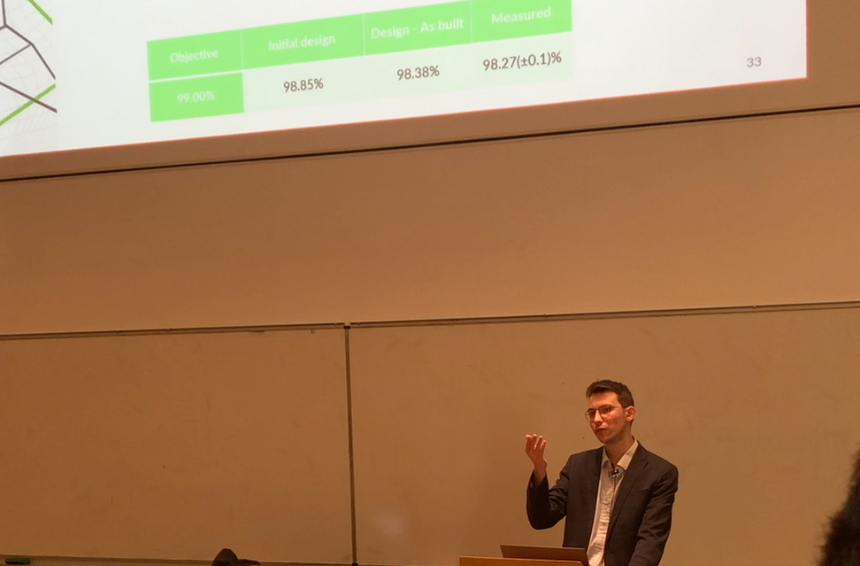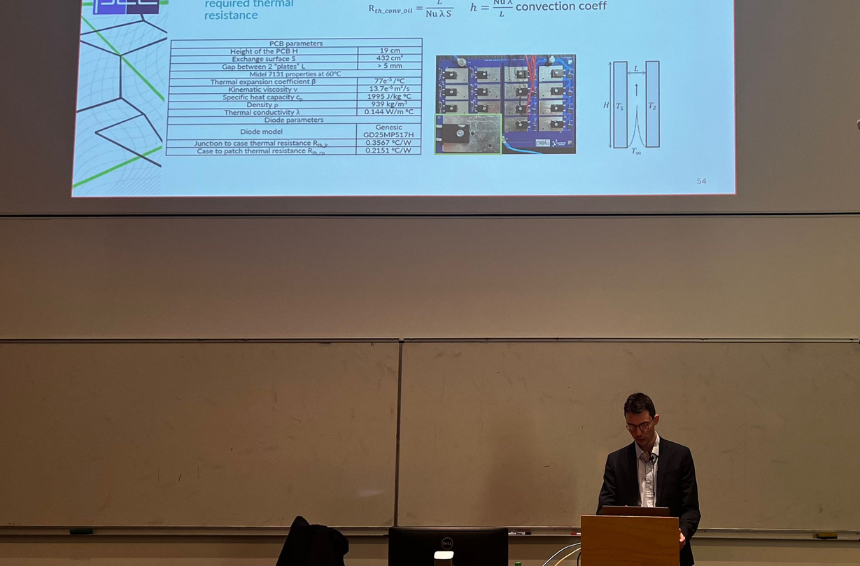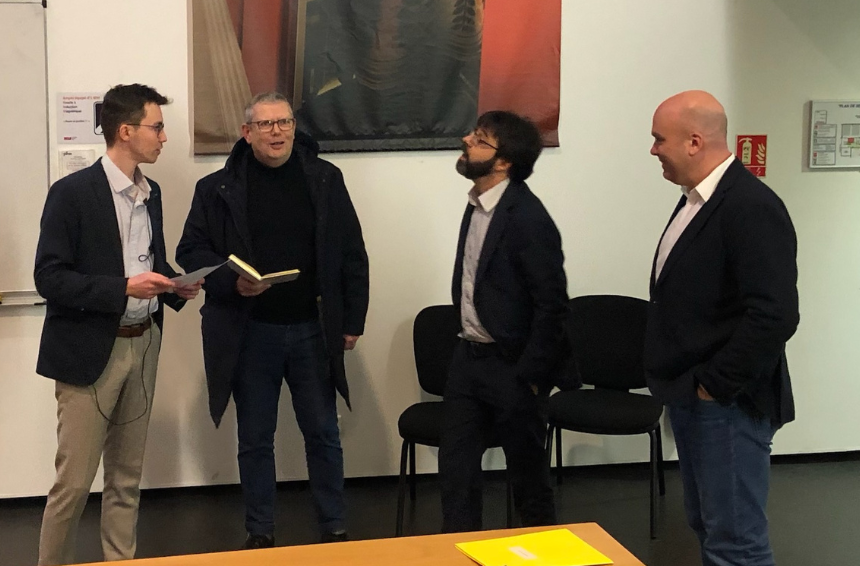PhD Pierre LE METAYER: “Unidirectional High-Ratio DC-DC Converter for Renewable Energy Sources”



Abstract
Driven by the need to decarbonise energy production, the integration of renewable energy sources into the power grid has become an important topic in modern electrical engineering. The use of medium voltage direct current (MVDC) collection network is currently being researched as it is expected to bring higher energy efficiency, among other potential benefits. A missing piece to connect low voltage DC-native renewable energy sources to an MVDC network is the high ratio step-up DC-DC converter. This dissertation focuses on the DC-DC converter for PV application, addressing the range of topics extending from the definition of the requirements that such a DC-DC converter must meet to proposals for hardware implementations that enable it, via the selection of the most suitable topology and the adaptation of its control. A representative scale 1.2 kV – 6.6 kV 83 kW prototype is designed, implemented and tested.
The motivation for an MVDC collection network is studied through the calculation of breakeven distances, based on efficiency criteria. It is shown that a break-even distance can be found for MVDC in the 10s of kilometers. It is observed that, in the case of a PV collection network, the distribution of sources and their power variability moves the break-even distance farther than in the point-to-point case. Based on these results, the European efficiency objective of 99% is set for the step-up DC-DC converter.
The PSFB and LLC DC-DC topologies are selected from a state-of-the-art study for further comparison considering the case study specifications. The comparison of power losses alone is not sufficient as similar European efficiencies are found. The decisive factor is identified as the behaviour of the output filter during MVDC faults. The LC output filter of the PSFB proves highly beneficial to the protection of the rectifier circuit which faces destructive current levels with a simple C filter as in the LLC.
The PSFB being historically used to supply power to loads (controlling its output voltage), this thesis develops the control functions needed for the case study application. Indeed, the input voltage regulation of PSFB is required, which was not presented in the literature. The average model takes into account the leakage inductance of the transformer which, depending on its values, can have a damping effect on the Cin Lo resonance. Tuning equations for a PI controller are proposed, considering the cases of damping and no damping. The proposed control is verified experimentally with a 350-600 V 30 kW converter prototype and a real field-measured load profile. A DC Fault Ride Through (FRT) control is also developed enabling the PSFB to continue outputting a close to nominal current during faults, facilitating the MVDC network protection scheme based on fuses.
This thesis proposed to immerse the complete medium voltage circuit of the PSFB in dielectric fluid in order to limit the insulations distance between the different components (MFT, rectifier, inductors and capacitors). In particular, the design of the rectifier is studied through the electrical, thermal, dielectric and chemical aspects. Because of the low output current and high efficiency requirements of the considered application the rectifier is implemented by series connection of discrete 1.7 kV SiC Schottky diodes. The associated snubbers are designed for voltage balancing and limitation of the PSFB rectifier overvoltages. This design is based on a model improved from the literature and verified experimentally on a 4 kV 12.5 A rectifier. The cooling of an oil-immersed PCB rectifier by simple patterned copper patches is proposed and verified experimentally at nominal oil temperature. Dielectric characterisations of PCB samples is performed in order to define design guidelines for MV PCB rectifiers. The design guideline of 3.3 kV/mm is defined from the 1% probability of Partial Discharge Inception in non-treated oil. The chemical compatibility with the oil of the components used for the rectifier implementation is checked and the conclusion of the preference for SMD components for the snubbers is reached.
A 1.2 kV to 6.6 kV 83 kW prototype is designed and implemented. The converter is composed of two elements: an inverter and an oil-insulated circuit (MFT, rectifier, inductors, capacitors). The choice of the components values is formalised as an optimisation problem aiming at maximising the European efficiency. The converter operation at full power and voltage is performed in a back-to-back configuration with an active load.
The efficiency of the studied converter being one of its most important features, work on its accurate measurement is performed. As the electrical methods are either not accurate enough or inapplicable in our case, this dissertation focuses on a calorimetric method. Because of the size and important thermal time constant of the prototype, a transient calorimetric method in ambient air is selected from the literature. The extension of the applicability of this method to the measurement of the tank losses is experimentally demonstrated. The efficiency measurements performed on the final implementation of the converter prototype give an European efficiency of 98.27% (±0.1%). The differences compared to the original target of 99% are explained mainly by two phenomena. The first one is the manufacture of the transformer using a core material different to the planned one. The second one is the use of an oversized inverter (designed for 250 kW) adding large switching losses. However, the good fit with the theoretical values gives confidence that the European efficiency of 98.85% of the initial design can be reached by solving these practical issues.
Director of thesis: Cyril Buttay
Advisor: Drazen Dujic


